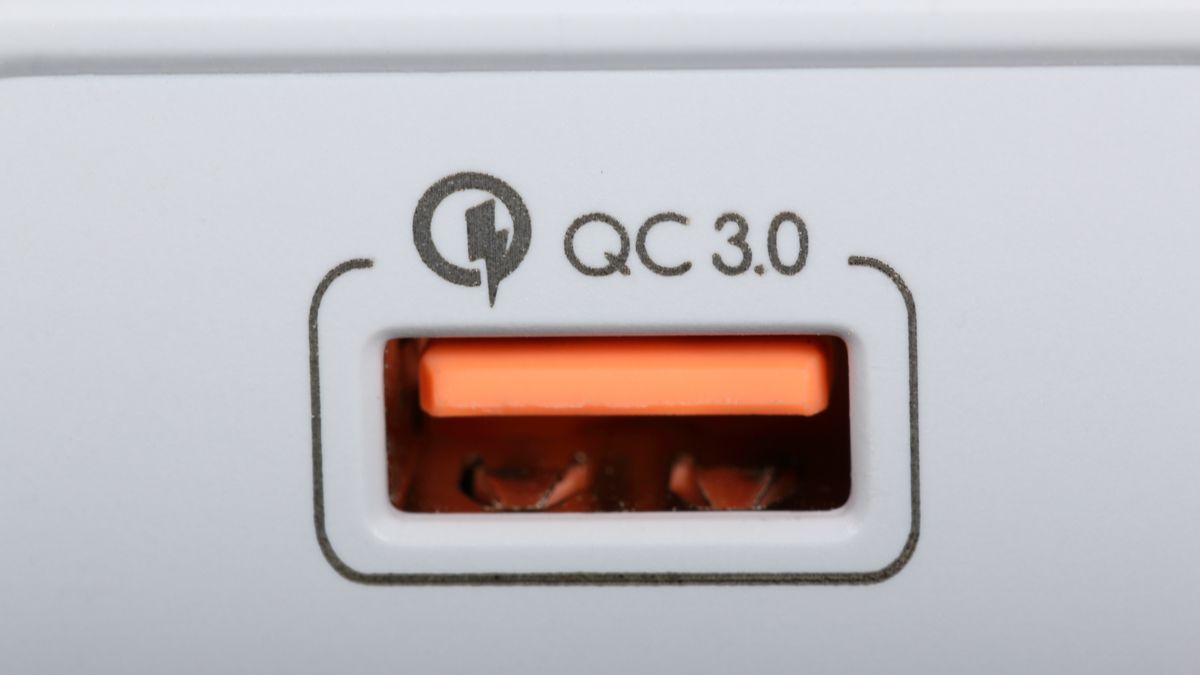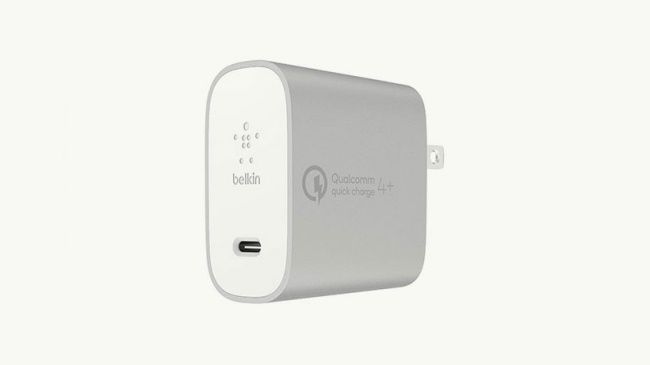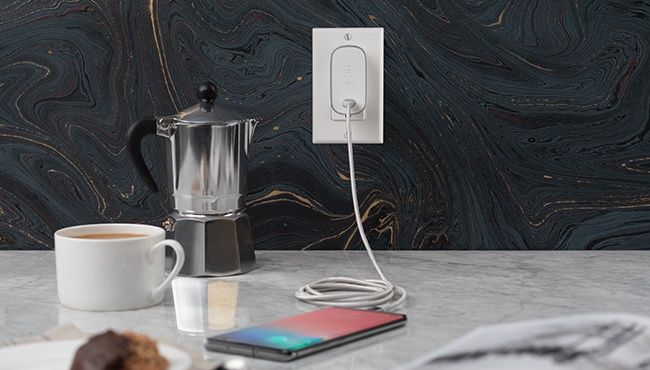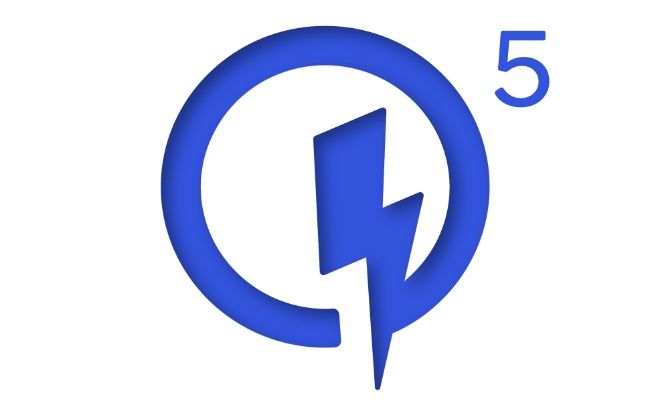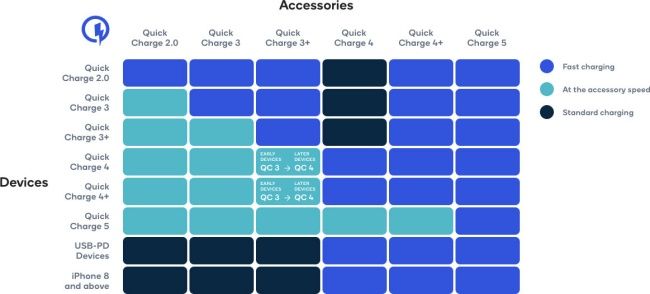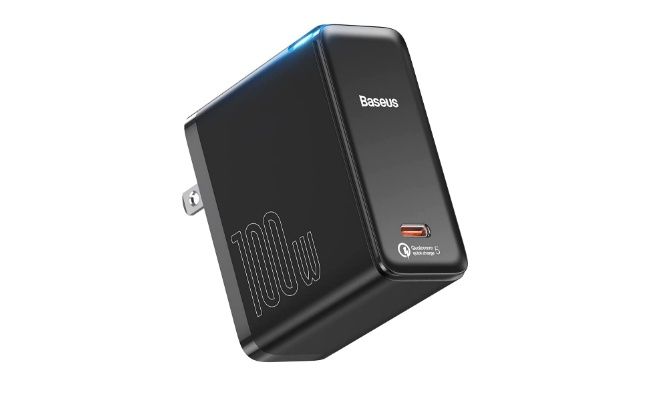Quick Links
Fast charging support is an increasingly common feature on smartphones. And over the years, Qualcomm's Quick Charge has successfully established itself as one of the most prominent fast charging standards. Here's what you need to know about it.
Fast Charging for Mobile Devices
We see more powerful smartphones featuring larger displays, multi-core processors, and 4G/ 5G connectivity each year. Unfortunately, while all these features enhance the smartphone experience, they drain the battery quickly. So device manufacturers are putting even bigger batteries. But charging these massive batteries takes time.
Since no one wants to see their mobile device plugged into a wall charger for hours, fast charging solutions like Quick Charge have arrived in the market.
Quick Charge (QC) is a proprietary fast-charging standard developed by Qualcomm, one of the world's biggest chipmakers. It was introduced in 2013 to deliver more power over the standard USB connector for charging mobile devices. QC comes as an optional feature with Qualcomm's Snapdragon line of chips. But it's not restricted to just Qualcomm devices. Instead, any manufacturer can license it from the company.
You'll primarily find QC support in Android phones, tablets, chargers, and power banks. In addition, Qualcomm says Quick Charge is available on over 1,000 accessories and over 250 mobile devices worldwide.
Moreover, several smartphone manufacturers have developed their own fast-charging protocols based on Quick Charge. These fast-charging protocols include Motorola's TurboPower, Xiaomi's Mi Fast Charge, and Samsung's Adaptive Fast Charging.
How Does Qualcomm Quick Charge Work?
At its most basic level, fast charging is simply about increasing the amount of power (represented by watts) delivered to a battery. It is computed by multiplying the current (amperage or amp) with voltage (volts). In the case of Quick Charge, the standard boosts the charging wattage by delivering higher voltages than the conventional USB rate of 5 volts.
By elevating the voltage instead of the current, Quick Charge avoids overheating the USB cable as it's the current that causes heat. Moreover, the standard can also pass more power over longer cables by increasing the voltage, thus compensating for any loss due to resistance.
Although the QC 1.0 iteration only supported a maximum power of 10W, the latest revision---Quick Charge 5---can deliver over 100 watts of power.
To make sure fast charging does cause any mishaps, Qualcomm has built several safety measures in the QC standard. For example, there is protection against over-voltage, over-current, and over-heating. Additionally, it can detect the charging cable quality to ensure the cable can withstand the supplied voltage and current.
Versions of Quick Charge
Quick Charge has evolved quite a bit since its introduction in 2013. Including the QC 1.0 version, Qualcomm has released seven QC iterations to date. Each new version has refined the standard while adding new features and increasing the fast charging speeds.
Barring Quick Charge 4 chargers, which aren't compatible with previous versions, all QC versions are backward compatible.
Here's a quick look at the various QC versions and what they offer:
Quick Charge 1.0
Quick Charge 1.0 was the first version of the QC fast charging standard. In an era of primarily 5W charging, it offered up to 10W fast charging. However, as 10W is no longer considered fast, QC 1.0 version isn't seen on devices anymore.
Quick Charge 2.0
Announced in 2014, Quick Charge 2.0 was a significant improvement over QC 1.0. It introduced support for voltages higher than 5V: 9V and 12V. It also allowed the delivery of 2A or 3A current, depending on the connector. As a result, Quick Charge 2.0 compatible devices could be charged at up to 36W.
Additionally, it was the first QC iteration to support the Dual Charge or Parallel Charging feature, which uses two power management integrated circuits (PMICs) to split the power delivered by the charger for more efficient charging. However, the feature was optional.
Quick Charge 3
Qualcomm engineered QC 3.0 to be 38 percent more efficient than QC 2.0. The highlight of this 2015 version was a voltage negotiation algorithm that allows the mobile devices to determine what power level to request at any time, ensuring the right amount of power delivery to the battery. Additionally, QC 3 brought more voltage options. Any voltage in the increments of 200mV (millivolts) from 3.6V to 20V was available for charging as a part of this version.
Quick Charge 3+
Quick Charge 3+ wasn't a successor to the QC 3. Instead, it was introduced in 2020 as a new option for mid-range smartphones that would otherwise opt for QC 3.0. It offered faster charging than QC 3 while supporting cheaper USB Type-A to USB Type-C cables.
Quick Charge 4
QC 4 was the real successor to QC 3, and it was unveiled in 2016. This version introduced support for up to 100W charging and further expanded the voltage options---3.3 volts to 20 volts at increments of 20mV. It also supported 3A or 5A current delivery, depending on the connector.
Additionally, QC 4 was the first Quick Charge version compatible with the USB Power Delivery (USB PD) standard. So if you had a USB PD-compatible device, you could charge it using a QC charger, but you'll only get a maximum of 27W charging.
Quick Charge 4+
Qualcomm introduced the QC 4+ version in 2017, and it was the first version to make the Dual Charge feature mandatory for supported devices. The feature was optional on all previous QC versions since QC 2.0. Additionally, the QC 4+ version had the same maximum wattage, voltage, and current support as QC 4.
Quick Charge 5
Quick Charge 5 is the latest iteration of the QC standard. It supports the delivery of over 100W of power for charging devices. QC 5 is also compatible with the Programmable Power Supply (PPS) feature of the USB PD standard, making it faster at charging dual cell batteries.
What Do You Need to Use Quick Charge Fast Charging?
You will need a Quick Charge-certified device and a QC-certified charger to make use of the fast charging standard. Typically the device packaging will mention whether it supports QC. But you can also contact your device or charger manufacturer to confirm whether you have compatible devices.
Qualcomm also maintains a list of supported devices on its website. It's frequently updated but may not include all compatible devices and chargers.
In case you use a mobile device and charger supporting two different versions of Quick Charge, you'll get the benefits offered by the older version of the two.
Quick Charge for Wireless Charging
Although Quick Charge is primarily associated with wired charging solutions, it's also available for wireless charging. Qualcomm introduced Quick Charge for Wireless Power in 2019. It's interoperable with Qi wireless charging technology. So when you use Quick Charge-certified wireless chargers with a non-QC device, the charger will fall back on Qi to offer standard charging speed.
Quick Charge for Wireless Power isn't as popular as its wired cousin and is only found on very few devices. Device manufacturers are mostly sticking to their proprietary fast-charging solutions for wireless charging.

